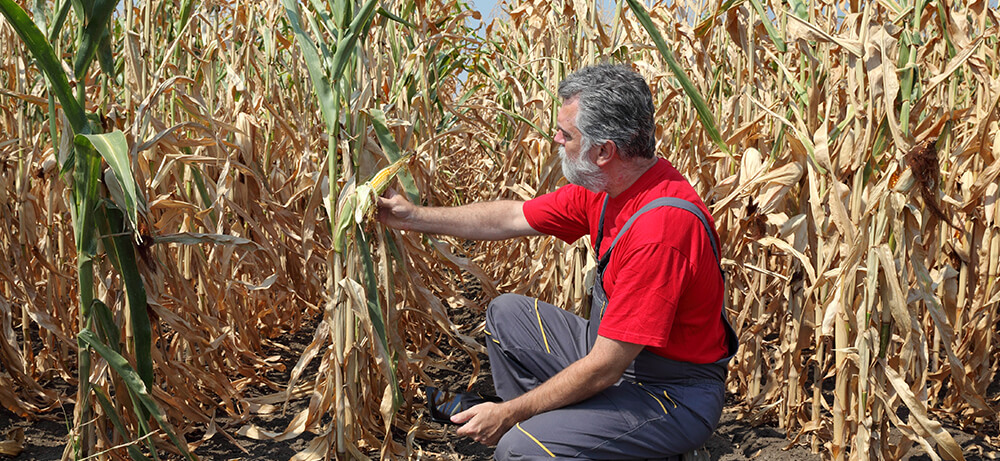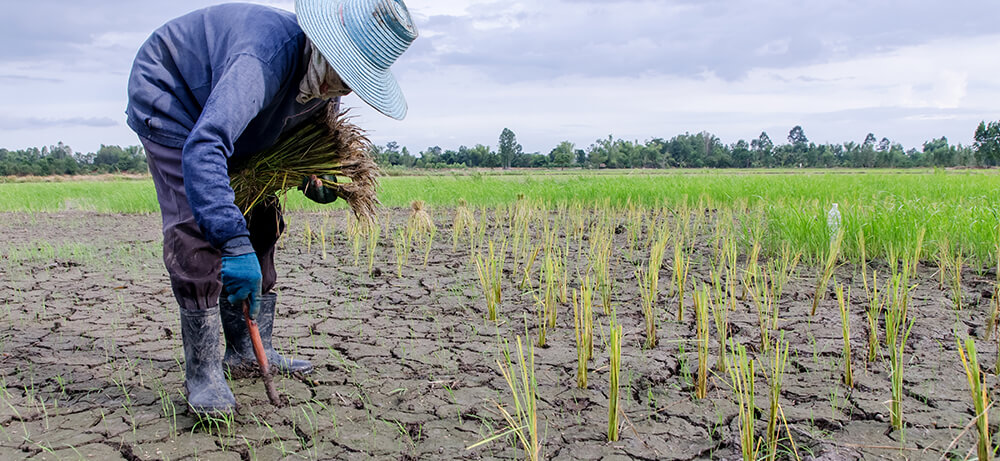Drought Withers Profits Without Crop Insurance
When crops whither under the hot summer sun, farmers worry about their bank account drying up too. Droughts decrease yield and increase the risk of fire damage. Crop insurance helps you put out financial fires in your farm operation.
Crop insurance covers drought
Instead of waiting for the rain, many people in the agriculture industry rely on insurance. Crop insurance with drought protection gives farmers peace of mind when the fields dry up and their investment suffers. Federal government programs provide funding for these drought coverage programs because crop insurance works a little differently than conventional insurance.

When you purchase insurance for your home or car, you’re paying the full premium that includes potential losses and profit for the insurance company. Crop insurance relies heavily on the government covering most of the premiums, including the operating costs of inductance providers. When there’s a drought and several farmers are cashing in on their insurance policies, tax payers help cover the claims.
Droughts and extreme heat melt profits
Droughts tend to be longer lasting and more damaging to crop yields than periods of extreme heat, but both are serious risks for the agriculture industry. Droughts and extreme heat decrease crop yields, which tends to raise the price. Fewer bushels of corn translates to each one being more valuable. That being said, the price increase is not enough to offset the losses from drought or extreme heat. Harvesting takes both time and money. If the damage from drought or extreme heat is bad enough, farmers may choose not to harvest at all. This would be called a total crop failure.
When drought hits, farmers have to decide whether or not to continue caring for their crops. Depending on the severity of the damage, you may decide to cut back the maintenance in your fields. Make sure to leave a sample, however, so you have something to support your insurance claim. Another option is to divert your irrigation and attention to a specific section of your field. This means abandon some areas of the field to focus your resources on the remaining crops that have more potential to survive.

High temperatures, high fire risk
Hot, dry weather increases the risk of fire damage in your fields. Without moisture, fires can catch and spread quickly from a dropped cigarette or hot machinery. Controlled burns can easily get out of hand. Burning trash could spark a widespread grass fire. Fire damage in the agriculture industry is devastating to crop yields and farm finances without proper crop insurance.
Crop-Hail insurance policies usually include fire protection, as well as coverage for loss during transit or storage. If you want supplemental coverage for fire protection, there are Specialized Peril policies available. Common specialized policies include grain fire coverage, hay fire coverage and other specific policies. These perils are often not covered by traditional Multi-Peril Crop Insurance (MPCI). MPCI policies may cover fire damage if it’s caused by an act of nature, lightening for example, but there are plenty of fires caused by humans.
To ensure your crops are protected from fire and drought, consult with a crop insurance expert before the damage is done.
